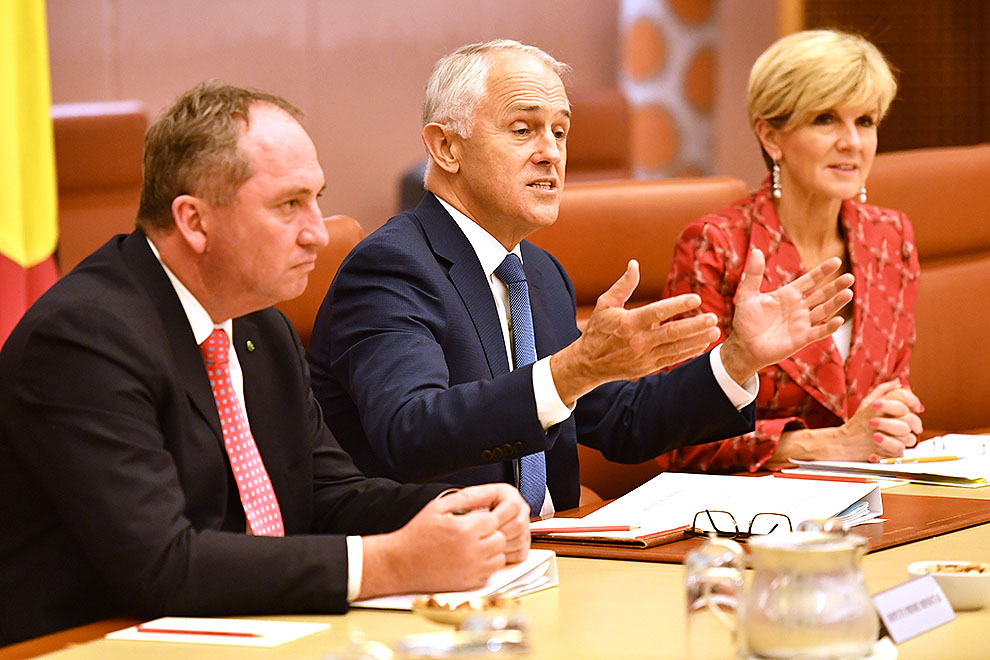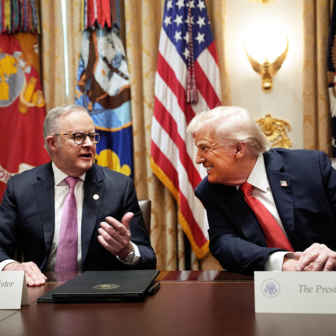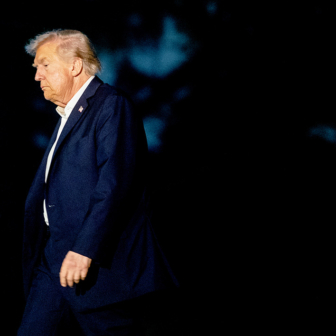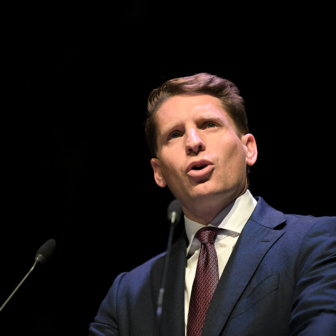For years the federal government published an annual stocktake of major electricity projects in the pipeline: some firmly committed, some undergoing feasibility studies, some simply proposals. But in 2016, the stocktake was suspended. There was too little investment to report.
The only information we have now is from the Australian Energy Market Operator, which publishes a simple graph and table of future projects on its website. It shows committed investment amounting to just 634 megawatts of new electricity generation – 583 MW of wind and 51 MW of solar – within the national electricity grid. Proposals exist for gas-fired stations, but none are definite. And there’s not a single plan for another coal-fired station.
To put that in perspective, the extra wind and solar generation would add a little over 1 per cent to the capacity of the national grid – if the gain wasn’t dwarfed by the 1618 MW of coal- and gas-fired power stations that have recently closed, and the further 3835 MW, overwhelmingly coal-fired, slated for closure. (The closures include Australia’s biggest polluter, the fifty-year-old Hazelwood power station, near Morwell.)
The net effect is that the capacity of the national electricity grid (which supplies about 75 per cent of Australia’s electricity) will shrink from 49,872 MW to 45,053 MW. That’s a reduction of almost 10 per cent in the capacity of a network that had to shut down supplies to parts of South Australia and New South Wales last week because of a lack of operational capacity. And this is happening under a government that boasts its energy policy will deliver energy security. Wonders never cease.
Power stations are long-term investments, typically planned to last thirty years or more. So an investor today has to plan for the station to be viable until 2050 – under whatever pricing regimes may emerge between now and then. It doesn’t matter how many lumps of coal silly ministers wave around in parliament, or how many times the PM makes silly appeals for companies to invest in new coal-fired stations, company directors can’t choose to do stupid things with investors’ money. If energy security is our goal, then we need a credible bipartisan framework for energy policy.
Exactly that plea was directed to the government this week by an extraordinarily broad coalition of interests. Not just environmental groups, but also the energy-intensive aluminium, concrete and steel industries, the electricity generators, the transmission companies and the big energy consumers. And not only the ACTU and the Australian Industry Group but also the Business Council. (It is worth noting which hard-right business groups didn’t sign the statement: the Australian Chamber of Commerce and Industry, the Minerals Council, and the National Farmers’ Federation – even though the farmers it represents are the biggest victims of climate change.)
The joint statement is short, and worth reading:
No room for partisan politics in energy
Representatives of Australian communities, including civil society, households, workers, investors, business energy users and energy suppliers today challenged all political leaders to stop partisan antics and work together to reform Australia’s energy systems and markets to deliver the reliable, affordable and clean energy that is critical to wellbeing, employment and prosperity.
There is simply no room for partisan politics when the reliability, affordability and sustainability of Australia’s energy system is at stake.
The status quo of policy uncertainty, lack of coordination and unreformed markets is increasing costs, undermining investment and worsening reliability risks. This impacts all Australians, including vulnerable low-income households, workers, regional communities and trade-exposed industries.
The finger pointing will not solve our energy challenges. More than a decade of this has made most energy investments impossibly risky. This has pushed prices higher while hindering transformational change of our energy system. The result is enduring dysfunction in the electricity sector.
We need mature, considered debate. Market reform can’t happen unless the Commonwealth and States agree, and policies can’t last and motivate investment without broad cross-party support. Politicians from all sides of politics and all levels of government need to come together to work through the necessary solutions to our energy market challenges. COAG has already established a strong policy process for this – the Finkel Review. Politicians need to back it and work with it…
As the preliminary report of the Finkel Review correctly notes, many of the technological, economic and consumer trends transforming our energy systems are irreversible. Policy and market designs need to evolve if investors are to deliver the energy services Australians require at a price they can afford. A raft of reforms are needed to encourage and support flexibility throughout the system. The next stage of the Finkel Review should be an opportunity to explore these possibilities and develop a comprehensive and integrated suite of reforms. Policy should be implemented promptly with broad-based political support.
There is broad agreement across Australia’s energy users and suppliers on the urgency of fixing the situation. All sides of politics and all levels of government share responsibility for the current state of our energy systems – and for taking action with the energy industry and its customers to improve it. A collective failure to act would come at a cost to all Australians.
For the business groups involved, it was a courageous statement. It gave Turnbull political cover to change tack, drop the partisan mudslinging, and lead a bipartisan push for a credible, lasting policy that would drive down emissions and give electricity generators the certainty needed for their thirty-year investments. It was another opportunity for Turnbull and Barnaby Joyce to end the point-scoring games and focus on an issue that matters.
But no. Once again, Turnbull and Joyce backed away from mature leadership and went back to bashing Labor up in the schoolyard of Question Time. Treasurer Scott Morrison, equally juvenile, waved around a lump of coal. Forget the gold pass for retired MPs; the real scandal is that we are paying these guys to run the country.
Remember where we are coming from. Australia remains, by some way, the largest per-capita emitter of greenhouse gases in the Western world, and those emissions are growing. While the government claims we are on track to meet our commitment to reduce emissions by 5 per cent by 2020, its own figures show them rising again: from 527 million tonnes in 2013–14 (the last year of the carbon tax) to 537 million tonnes in 2015–16.
Since the carbon tax was dropped, our emissions have grown by roughly 1 per cent a year, mostly from electricity generation. With no carbon tax, coal-fired emissions increased; high gas prices caused gas-fired stations to close, or reduce loads; and a drought in Tasmania meant less hydro generation. In two years, emissions from electricity generation swelled by 4.6 per cent, from 180.7 million tonnes to 189.1 million.
The real disaster over those years was the abolition of the carbon tax (or rather, the emissions trading scheme it was set to morph into). The rest of the Abbott government’s performance on climate change was not as bad as we had feared. Against the odds, Greg Hunt as environment minister and Julie Bishop as foreign minister got the government to agree to a target of reducing Australia’s emissions in 2030 by 26–28 per cent from their 2005 levels; it might not sound much, but it equates to a 50 per cent fall in emissions per capita, in just twenty-five years.
Hunt also secured a Climate Change Authority review to advise how the reduction should be achieved. He preserved the Renewable Energy Target as the main driver of emissions reductions. And his design for the Direct Action policy included a “safeguards” clause allowing the government to order future reductions in emissions in specific sectors – such as electricity. Hunt didn’t get many plaudits from the media for his three years as environment minister, but winning some of those battles in the Abbott government can’t have been easy. He deserved better reviews.
Turnbull was once prepared to lose the party leadership over his support for a bipartisan policy to reduce emissions. Sure, he had promised the Nationals this time around that he would not bring back an emissions trading scheme, but that doesn’t rule out introducing an emissions intensity scheme, or EIS, to drive down emissions from the electricity sector, using the safeguards clause in the government’s own Direct Action policy.
With the election over, and with Labor having moved towards a policy resembling an EIS, the time was right for Turnbull to step up to the plate and bring Joyce, the Nationals and a critical mass of the Liberals to support a “mature, considered debate” leading to reforms that both sides could endorse. (The Greens and One Nation would oppose it, of course, for opposite reasons, but getting a Labor–Liberal–National agreement is what matters.) Labor’s environment spokesman, Mark Butler, has made no secret that this is what he wants, and Turnbull had made an inspired choice in appointing Josh Frydenberg, a bright, ambitious potential party leader, as environment and energy minister.
More support came from the Climate Change Authority, now led by former National Farmers’ Federation chief executive Wendy Craik, with former Coalition heavyweights John Sharp (Nationals) and Kate Carnell (Liberal) as board members. In an admirable report on how to meet the 2030 target, the authority urged the government to adopt an EIS as the central means of switching electricity generation from coal to renewables or other low-emission options. The EIS would require generators to reduce their emissions each year, on a straight line towards zero emissions from the electricity sector by 2050. The operators’ options would include closing units, retrofitting cleaner technology, or buying excess reductions from other generators. And, of course, any new plant would have low or zero emissions.
The report avoided the politically charged subject of state government renewable energy targets, but it did argue that there should be no further extension of the federal Renewable Energy Target, which would lapse in 2030, and the EIS should gradually take over the job of driving emission reductions. This also implies there should be no new state renewables targets.
This is essentially the compromise package that business, unions and environmentalists are now urging, almost pleading for. Please, stop the partisan games and give us a realistic policy. The Coalition should drop its opposition to an EIS; Labor should drop its state-based targets. Let’s have policy set at one level of government, and endorsed by both sides.
With no support from government, the Climate Change Authority’s report sank. In December, it was the turn of chief scientist Dr Alan Finkel and his colleagues to put their view, in a preliminary report on their inquiry into the future security of the national electricity market, set up in the wake of South Australia’s brief power blackout in September 2016. Rather than play the blame game, the review looked to the future:
The transition to a lower-emissions economy is under way and cannot be reversed. Ensuring that the transition is smooth will require major investments in assets with long life spans. Policy stability and predictability is necessary to ensure that investors have confidence to build the assets that will deliver the required stability and reliability of electricity supply.
It, too, endorsed an EIS as the central element – hardly surprising, since Finkel was a member of the Craik review a few months earlier. Frydenberg responded with some sensible, encouraging words of support, but he was immediately slapped down by Turnbull, who proceeded to rule it out. In so doing, he ruled out another opportunity to solve one of Australia’s problems rather than try to exploit it for political ends.
It was the same this week when the business groups tried to offer the government a way out, which it rejected. Instead, the leader who told us in 2015 he wanted to lead adult discussions has tried to imply that South Australia’s renewable energy policies are responsible for 100 kph winds knocking over transmission towers last September, for breakdowns in the Victorian transmission system in December, and now for a series of brief but untimely breakdowns at gas-fired plants that combined with low winds and extreme heat to force another brief interruption to SA’s power supply last week.
Weak leaders can choose to play an issue for short-term political advantage, as Malcolm Turnbull is doing now to shore up his support in the party room. A strong leader, such as Turnbull had hoped to be when he took office, would focus on delivering what is in Australia’s long-term interests, winning political and community support for policy.
Turnbull and the Coalition would win far more kudos by tackling and solving the problems of energy security and reducing emissions than they will by trying to use them as issues with which to thump Labor over the head. They should not be deluded by rave reviews for such tactics from backbenchers and the Murdoch press. Voters elected them to fix the problems, not to blame Labor for them.
This is a test of leadership: both for Turnbull, who is wasting his opportunities, and for Joyce, the man who more than anyone can now make the Turnbull government work, or send the Coalition back into opposition. •




